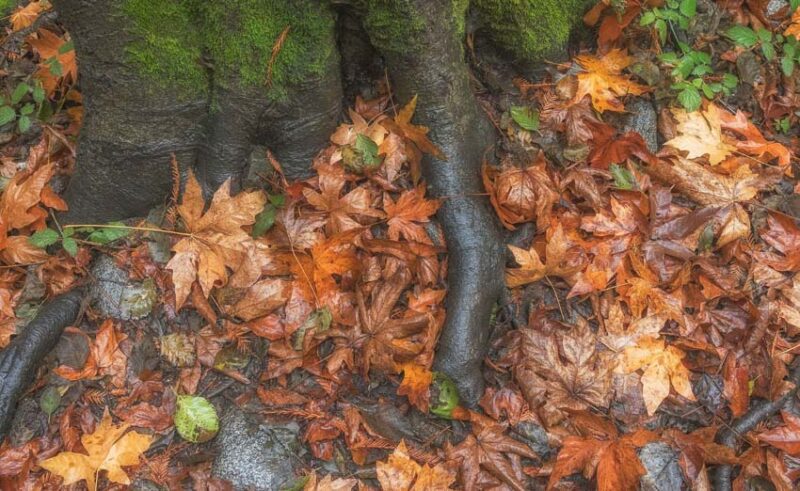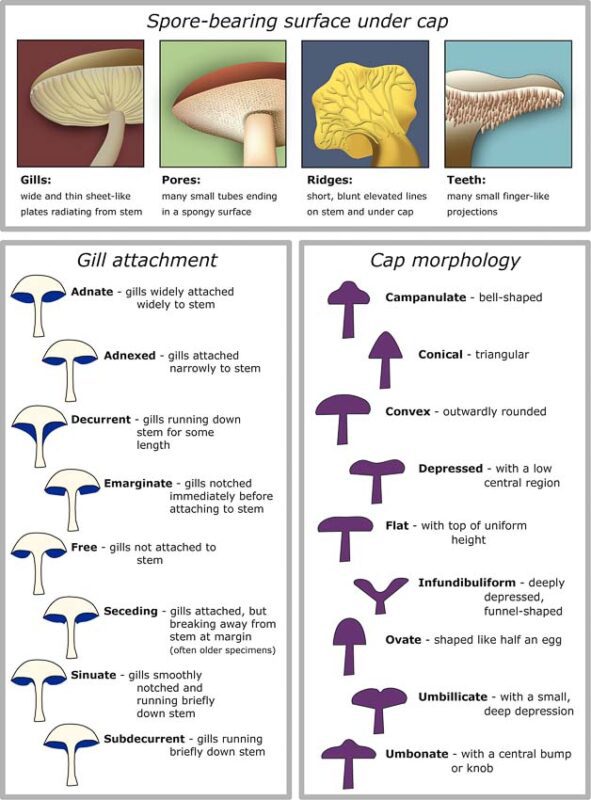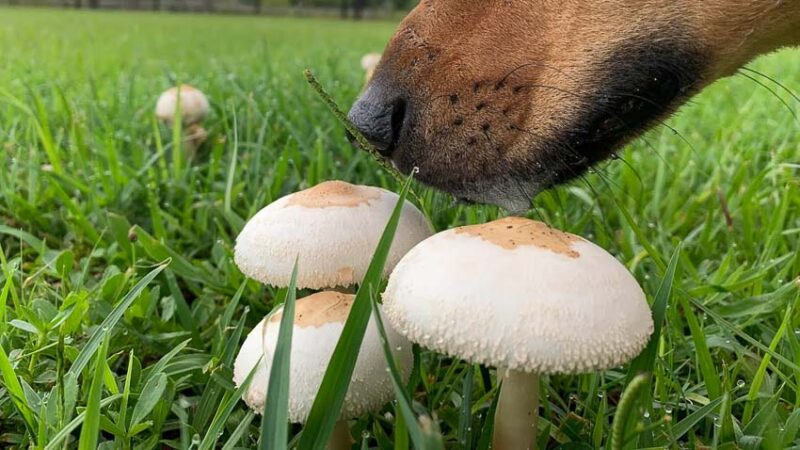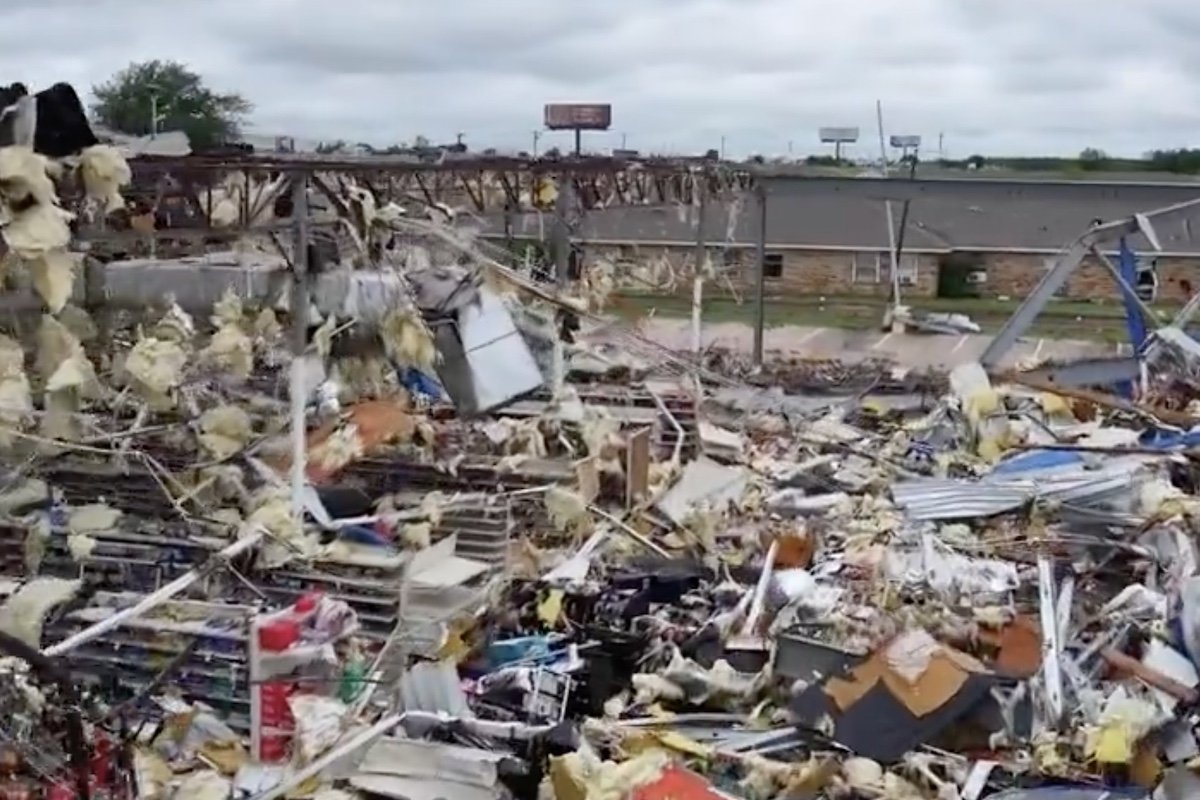A Guide to Mushroom Types, Traits, and Ways to Eliminate Them from Your Lawn
Mushrooms in your yard are a sign that nature is hard at work. Although most mushrooms are harmless and disappear quickly, mushrooms can become a burdensome problem in your yard if the causes are not addressed. In this guide, we’re going over how to get rid of mushrooms to keep your yard looking lush and beautiful.
What Causes Mushrooms in the Lawn?
Mushrooms are more likely to occur in wet, humid lawns, so you may notice them growing after heavy rains or if you over-water your lawn. They tend to grow on woody materials, such as old roots, dead leaves, and bark. Since they’re one of the few organisms that decompose woody material, they’re also usually beneficial.

Shady areas of your yard are the most susceptible to mushroom growth, especially around tree roots. Mushrooms will appear on any organic material that sits out for long periods of time, such as piles of compost, grass clippings, and pet waste. If your lawn has heavy thatch buildup, mushrooms can also thrive in those environments.
Once they start growing, they release spores which leads to more fungal growth. The cycle continues as long as the conditions are favorable for mushroom growth.
Fungi and the Mushroom Lifecycle
Mushrooms are unique organisms with interesting lifecycles. Some mushrooms complete their entire lifecycle in less than a day, and since they’re not visible for the majority of their lifecycle, it can seem like they appear suddenly out of nowhere.
The mushroom lifecycle starts with a spore germinating under favorable conditions. After which, thread-like fibers known as hyphae are comprised of tiny mycelium, branching out from the spore to create a tangled mat of growth.


As they spread, the hypha release enzymes that break down organic matter into nutrients that they absorb. If conditions allow, they will keep spreading until they encounter a spore of the opposite sex. Once this happens, they will wind around each other, creating a hyphal knot.
At this point, reproduction occurs, and both spores contribute genetic material that produces a new mushroom.
As they continue to break down organic matter, all of the nutrients they consume go toward the exponential growth of the fruiting body, which is when we start to see mushrooms on the ground. Finally, at the end of the mushroom lifecycle, the mature fruiting body releases spores, letting the cycle start over again.
Environmental Factors that Contribute to Mushroom Growth
Mushrooms require a substrate, which usually occur in lawns with soils that are rich in organic matter. You can often find mushrooms growing on substrates like wood, straw, sawdust, woodchips, manure, and compost.
Just as important as having a suitable substrate, mushrooms also need several other factors to grow, including adequate temperatures, moisture, and pH levels.
- Moisture–Mushrooms require a lot of moisture and often grow after it rains heavily. They usually appear 5 to 7 days after heavy rainfall.
- Temperature–Most mushrooms thrive in temperatures between 50-70°F (10-21°C), but some prefer colder temperatures.
- pH–Mushrooms prefer a slightly acidic substrate, with a pH of about 5.0 to 6.5. Studies have shown that fungal growth increases as pH levels go down to about 4.5. Below that, fungal growth decreases.
Are Mushrooms Dangerous to Kids or Pets?


While most lawn mushrooms are not harmful, there are some species that are dangerous to pets and kids. It’s important to be able to identify them to lower the risk of danger for you and your family.
The Risks of Mushroom Exposure for Humans and Animals
Common lawn mushrooms are usually harmless, but some species are toxic enough to kill children and pets. Most mushroom poisonings are accidental and occur in children under the age of six, so it’s important to teach your family about the dangers of mushrooms, especially if you have young children.
The best practice would be treating all mushrooms as if they’re poisonous so you don’t have to worry about which ones are edible.
Mushroom toxicity can have a variety of symptoms depending on the type of mushroom consumed. These include gastrointestinal problems like stomach cramps, vomiting, nausea, and diarrhea. You may also see respiratory and heart problems, liver failure, kidney failure, and neurological issues.
Treating mushroom poisoning promptly is of the utmost importance, so if you suspect a child or pet has consumed a mushroom from your lawn, visit the emergency room or vet immediately. It’s also a good idea to bring a specimen of the mushroom with you for identification purposes.
Are Mushrooms Bad for Your Lawn?
Mushrooms are a sign that your soil is healthy, and they are very rarely bad for your lawn. However, there are a few mushroom varieties that can be toxic to your grass or damage your lawn.
The Impact of Mushrooms on Lawn Health
Some people may find mushrooms to be unsightly in an otherwise lush and green yard, but they are almost always beneficial to your grass. Seeing mushrooms in your yard is a good indicator that your soil is healthy and rich in organic matter.
They also play an important role in the health of your soil, breaking down and cycling nutrients. Once conditions become unfavorable for fungal growth, they disappear on their own, which is usually when the sun comes out and dries up your lawn.
The Role of Mushrooms in Soil Health and Nutrient Cycling
During a mushroom’s lifecycle, the mycelia dispose of spent organic matter into the soil. This process makes nutrients available to plants and grass and improves the overall health of your soil.
With the help of enzymes, fungi also help balance carbon and nutrients by converting organic matter into biomass, organic acids, and carbon dioxide.
Additionally, mushrooms make nitrogen and phosphorus more available, which are two of the most important nutrients for a healthy lawn. Mushrooms also work together with plants to capture carbon from decaying matter to store within the soil, even absorbing toxic metals.
Fungi That Damage Your Lawn


As mentioned above, most common mushrooms are harmless and actually benefit your lawn. However, this isn’t the case for fairy rings, which can damage your grass and soil.
Fairy rings are commonly found in older lawns that contain large amounts of organic matter in the soil. You can also find them in areas that were once home to trees. You can identify fairy rings by their signature array, which is usually a circular, arc, or half-circle configuration that can span several feet in width.
While fairy ring fungi don’t attack your grass, they grow on your soil’s substrates, creating conditions that can damage or even kill your grass.
There are three main types of fairy ring fungi:
- Type I–This type causes the most damage and appears as a ring of dry, dead grass that repels water.
- Type II–This fungus releases excess nitrogen in the soil, causing the grass to grow faster. It appears as dark green rings of grass.
- Type III–Rings of fruiting bodies appear above ground but don’t harm your lawn.
It can be quite difficult to get rid of fairy rings because they often reestablish themselves after attempted extermination. Once you rid your yard of these fungi, you should take preventative measures to keep them from returning.
Type III fairy rings, however, are often seen as charming, and they are safe for your yard. You can feel free to clear them or simply leave them alone.
Methods to Get Rid of Mushrooms
While adding organic matter to your soil can improve its structure and provide your lawn with essential nutrients, it can also attract mushrooms. If they become a problem, there are several methods you can try to remove them from your lawn.
Natural Methods for Removing Mushrooms
It is possible to remove mushrooms without using chemicals. You can try the following natural methods:
- Dish soap– Dish soap solutions will not harm your grass and are very effective to kill lawn mushrooms.
- Mix two tablespoons of dish soap into two gallons of water and pour or spray the areas where mushrooms grow.
- Baking soda– This method raises the pH level of your soil to one unfavorable for mushroom growth.
- Mix two tablespoons of baking soda in a quart of water and apply the mixture to affected areas, or sprinkle baking soda onto the mushrooms before watering.
- Vinegar– Vinegar is a natural fungicide since it also creates pH levels unfavorable for growth.
- Mix five tablespoons of vinegar in a gallon of water and use a pump sprayer to soak areas where mushrooms are a problem.
- Pull them by hand–Before they can release spores, pull mushrooms by hand to keep them from reproducing.
Chemical Methods for Removing Mushrooms
For stubborn mushroom patches that are damaging your lawn, you may need to call in stronger forces like a chemical fungicide. It’s important to note that these chemicals can also kill beneficial organisms in your soil, so you should only use them if natural methods are unsuccessful.
How to Prevent Mushrooms from Growing in the Future
If mushrooms aren’t harming your lawn, consider letting them grow. As mentioned, most mushrooms help the soil and root systems access nutrients and water. However, if mushrooms bother you and you don’t want them on your lawn, there are steps you can take to prevent them from growing in the future.
Tips for Preventing Mushroom Growth
Consider the environmental factors that encourage mushroom growth and take action to make conditions less favorable.
- Reduce watering–Moisture plays a significant role in fungal growth, and one of the first indicators of over-watering is the appearance of mushrooms. Over-watering can lead to other types of lawn disease, and you should ensure your lawn has proper drainage by adding French drains to areas with standing water.
- Dethatch your lawn–Mushrooms thrive with heavy thatch buildup and low nitrogen levels because thatch provides a substrate for fungal growth. So if you notice a lot of mushrooms, it’s time to dethatch your lawn, bag your clippings, and use a nitrogen fertilizer.
- Remove organic matter–Don’t let organic matter like pet waste or clumps of grass clippings sit on your lawn. Remove all types of organic matter in your soil, like dead tree roots, whenever possible. When you add compost to your lawn, pull out any large chunks of wood that you find.
- Aerate your lawn–Lawn aeration improves water drainage and air circulation and is one of the best natural methods for mushroom removal.
- Mowing–If there are too many mushrooms to pull by hand, you can mow mushrooms to keep them from releasing spores. You can also cut your lawn shorter for a brief period to help it dry out faster.
Best Practices for Lawn Care and Maintenance
Proper lawn care will prevent mushrooms from growing. For instance, the best time to water grass is in the morning, since it allows the water to soak into the soil and roots, but it also gives your lawn a chance to dry in the afternoon. This process makes your lawn less susceptible to diseases and fungi.
You can also test your soil to correct any nutrient imbalance before it causes a problem for your lawn. Without the proper nutrients, your grass can become vulnerable to disease and damage. A test will help you determine if you should add nutrients or lime to your yard to boost the pH level.
Frequently Asked Questions About Mushrooms in Your Yard
How Do I Know If a Mushroom is Poisonous?
Mushroom identification is a tricky area. A common feature of poisonous mushrooms is white gills, but the only way to really tell if a mushroom is poisonous it to consult with a mycologist or mushroom expert.
Can I Eat Mushrooms Growing in My Yard?
To be safe, treat all mushrooms that grow in your yard as poisonous. It is not recommended to eat them without consulting with a mycologist. Be sure to keep mushrooms away from pets and children.
Can I Mow Over Mushrooms?
You may mow over mushrooms, but it is usually better to pull them up and dispose of them. Mowing over mushrooms is preferable to letting them mature fully and release their spores.
Should I Water My Lawn Less to Prevent Mushroom Growth?
Mushroom growth is actually one of the first signs that you’re overwatering your yard. Overwatering can lead to more serious lawn diseases like root rot, so if you see mushrooms in your yard, cut back on the watering schedule.
Will Removing Mushrooms Cause Them to Spread?
To keep mushrooms from spreading, remove them before they fully mature and release their spores. Once they do, they will create new mushrooms and continue the cycle.





